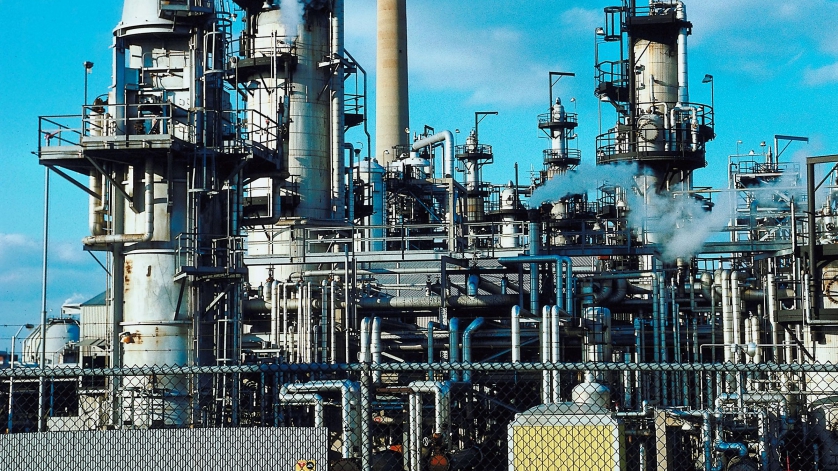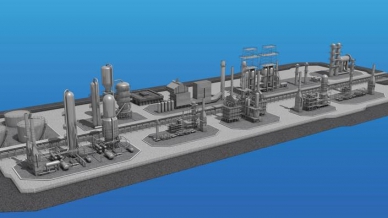
There is a direct relationship between tubeskin temperature measurement and hydrocracker performance. Too-high or too-low temperatures can lead to slowdowns, shutdowns, furnace tube failures, and other costly losses. To improve bottom-line performance, refineries need reliable and accurate systems for measuring and monitoring temperature.
Temperature is a determining factor in the safety and performance of hydrocrackers and other hydroprocessing units. Inaccurate or unreliable temperature measurement will eventually lead to a host of issues – all of which reduce reactor efficiency, take up plant operators’ time, and hurt the bottom line. For these reasons, refineries all over the world rely on WIKA’s innovative Gayesco thermocouple assemblies.
Issues Arising from Inaccurate Temperature Measurement
Even small deviations from the optimum working temperature range can cause problems. Here are four of the main issues that impair performance:
- Reduced reaction rate. The catalyst in the reactor has an optimal temperature band within which the reaction is the most efficient. Catalytic reactions are exothermic in nature and work best at the optimal temperature. High temperatures can temporarily increase activity and, therefore, the reaction rate. However, high temperatures can also lead to decreased catalyst life.
- Reduced flow in the reactor. As catalysts age, they need slightly higher temperatures to maintain a good reaction rate. The only way to get the process fluid hotter is to slow down the rate through the furnace, which essentially slows down the flow through the reactor. So, if an inaccurately high temperature reading by the tubeskin thermocouple unnecessarily limits the furnace, then the forced slowdown – and the ensuing reduced efficiency – would be for naught.
- Slowdowns and unplanned shutdowns. Suboptimal temperatures in the reactor – usually too high – may necessitate a slowdown. This action is taken so that operators can adjust – usually reduce – the throughput in order to maintain the proper temperature. Accurate temperature measurement and monitoring help ensure that throughputs are promptly reduced. A bigger problem occurs when a hydrocracking unit cannot be slowed down in time or the temperature cannot be brought back to a safe range. When that happens, the entire unit has to be depressurized and shut down before its scheduled time – a very expensive ordeal.
- Tube damage. Process furnaces contain a series of metal furnace tubes. Hydrocarbons flow within each tube, creating an outward force caused by the pressure of the fluid. As the tube heats up, the metal can soften and expand. The thinner a furnace tube becomes, the less it can contain the pressure. Poor temperature measurement and monitoring could result in the tube temperature exceeding the tube’s metallurgical limit. At some point, the tube will fail. When that happens, the hydrocarbon is released into the fire heater, leading to catastrophic results.
The High Cost of Poor Temperature Monitoring
Ideally, the hydrocracker’s operating temperature is always within the recommended range. When it dips below the ideal, operators can increase the throughput. Too-high temperatures limit the throughput of the unit. One refiner that WIKA works with said slowing down a furnace typically costs the plant $16,000 a week.
If a slowdown does not bring about the desired effects, the unit has to be shut down completely for corrective action. A shutdown can cost close to $1 million a day and last for more than a week. With any shutdown, scheduled or unplanned, comes the startup process – one of the most precarious processes for a catalytic unit.
Accurate temperature measurement and monitoring, along with early corrective actions, help avoid lengthy slowdowns and costly shutdowns.
Best Practices in Temperature Measurement
With so much at stake, refineries need to put in place best practices for thermocouple selection, installation, and protection. Some do’s and don’ts:
- Don’t expose thermocouple cables to direct flames. Tubeskin thermocouples can withstand a lot of heat. However, direct flames over time damage thermocouple sensors and prematurely age these otherwise durable temperature measurement devices.
- Don’t place thermocouples on the hot side of the tube. What’s the coolest area inside a hydrocracker? Answer: The side of the tube next to the furnace wall, facing away from radiant heat. This side of the tube acts as a heat sink to keep the tubeskin thermocouple cool, thereby extending its life.
- Do put extra materials on the tube’s cool side. Thermocouple assemblies come with an assortment of loops and coils. Hiding them between the furnace wall and the tube protects them from high heat and direct flames.
- Don’t forget about expanding furnace tubes. As metal tubes naturally expand with heat, tube expansion is unavoidable. However, a piston-style exit or a loop–coil combination can compensate for the expansion and prevent damages.
- Do consider the sheath material. Sheathed thermocouples are protected by an outer layer of stainless steel, Inconel, or alloy TD/Pyrocil D. Each of these materials has its own temperature limits. Select an alloy that matches the application and protects the thermocouple sensor when exposed to the unit’s process temperature.
Temperature Measurement Solutions
WIKA USA has many decades of experience developing temperature measurement systems that improve refinery performance.
Furnace tubeskin temperature measurement
- Gayesco V-Pad® (model TC59-V) — This tubeskin thermocouple features an engineered block design and flexible, mineral insulated (MI) cables. It is mechanically strong and shock resistant, perfect for low heat flux furnaces and those without flame impingement.
- Gayesco Refracto-Pad® and Gayesco Xtracto-Pad® (modelsTC59-Rand TC59-X) — These tubeskin thermocouple assemblies feature a patented heat shield over the weld pad and sheathed cable. The high opacity of the insulation helps convert radiant and convective heat into conductive heat, resulting in highly accurate measurements and long-lasting thermocouple sensors.
Reactor temperature measurement
- Gayesco Flex-R® (model TC96-R) — A flexible multipoint thermocouple assembly, the Gayesco Flex-R® is ideal for radial temperature profiling. Thermocouple sensors can be placed virtually anywhere in the reactor to detect hotspots, uneven flow, and maldistribution/channeling in the catalyst.
WIKA USA understands refineries and their unique requirements. Our experts can advise you on the pros and cons of various temperature measurement systems, install them for optimal performance, and replace them at the end of their natural lifetime. Contact WIKA’s experts for innovative solutions to improve the performance and safety of your hydroprocessing units.
Click here to enter our interactive refinery to learn more about WIKA product applications.



Very well written Robert T!
Excellent write up